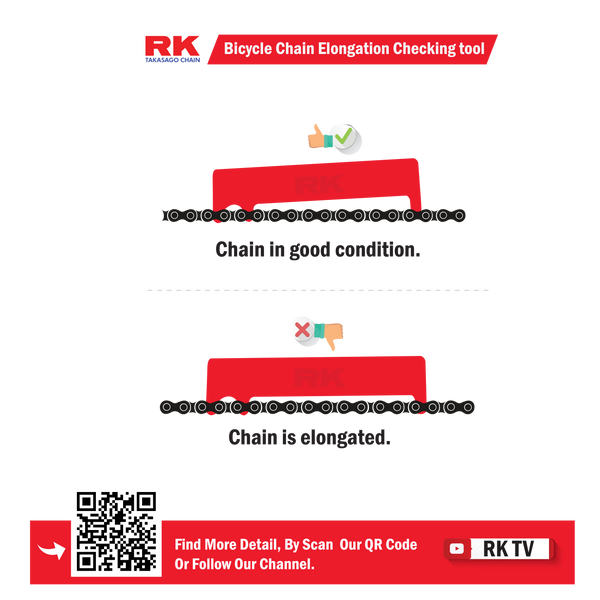rkbicyclechain
RK Bicycle Chains Checker
Chain wear is not linear
When keeping a check on chain wear, it’s critical to know that the wear does not happen in a linear fashion. If you get 3,000km of riding to .25% wear, you’ll unlikely get another 3,000km by the time the chain reaches .5% wear. This is because most quality chains have a number of surface hardening treatments and low friction coatings which will wear away with use – accelerating material wear. Additionally, the contamination inside the chain’s links will increase with use.
Don’t get caught out. Be sure to check at regular time-based intervals, and don’t rely on distance as a measure.
Measuring the chain elongation
It’s often recommended that the most accurate and best way to measure your chain is with a ruler. The theory is that by measuring pin-to-pin you can accurately gauge how much wear has occurred in the components of the chain and it removes any question over roller tolerances and wear, instead focusing solely on the actual pitch of the chain.
However, in my opinion, this process is fraught with the likelihood of user-error. Lining up a ruler from the centre of one pin to another 10 or 12 links away, all while remaining within less than half a millimetre of accuracy, isn’t something that many can do consistently. Additionally, you won’t be able to easily add tension to that chain, and so dirt and lube will have a huge impact on the measurement.
If you disagree (you’re wrong!), then the process is as follows:
With your chain still on the bike, place a ruler’s zero inch mark directly above the center of one of your chain pins. Now count 12 complete links. A complete link equals one inner and one outer. A rivet on a new chain should line up exactly to 12 inches (304.8mm) on the ruler.



